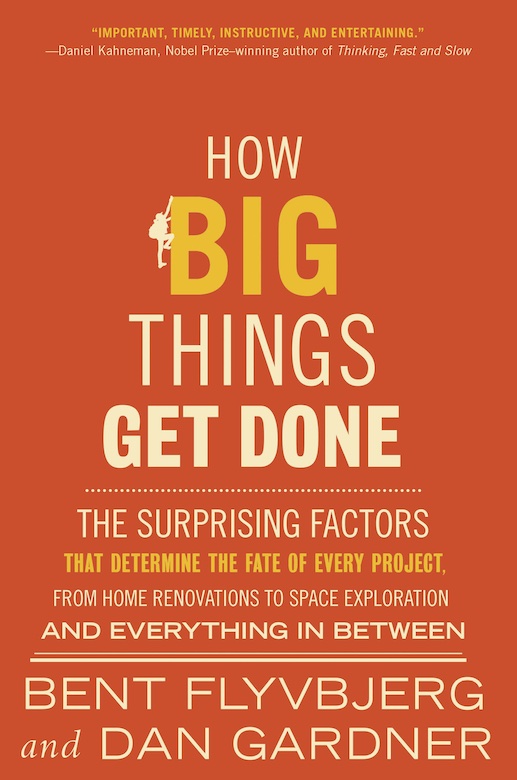Elon Musk, Jimi Hendrix and the ancient Greek thinker Aristotle all make appearances in a book out on Feb. 7 on the performance of megaprojects. Based mainly on the work of an academic at the U.K.'s Oxford University, "How Big things Get Done" is not a heavy tome but a pacy trot through the causes of project pitfalls and ways to avoid them.
As chair of major program management at Oxford's Saïd Business School, lead author Bent Flyvbjerg claims vast knowledge of the performance of megaprojects, stemming from a database accumulated since the late 1990s. His erudition makes it onto the page with fluid prose, no doubt shaped by his co-author, the New York-based writer Dan Gardner.
The troubled Great Belt fixed link between the islands Zealand and Funen in Flyvbjerg's home country of Denmark, launched some 30 years ago, "nudged" him to start building his database. It now lists 16,000 megaproject entries from 136 countries making it the world's biggest, according to the writer.
While the Danish project ended up way over budget, the overrun's scale was underestimated by officials until a "national audit confirmed my numbers," writes Flyvbjerg. "In every big project, there are a blizzard of numbers generated at different stages by different parties. Finding the right one—those that are valid and reliable—takes skill and work," he adds. The tendency for various parties to "spin" the numbers in their favor is not usually corrupt, but "human nature."
The database revealed a scale of time and cost overruns in megaprojects that "shocked" practitioners. "Most big projects are not merely at risk of not delivering as promised. Nor are they only at risk of going seriously wrong. They are at risk of going disastrously wrong," he asserts.
Citing sources, including eminent psychologists, a cultural anthropologist and Aristotle, the book traces many of the causes of project failure to aspects of human nature, not least of which irrepressible optimism. Political expediency and opportunism also appear among the drivers.
It contrasts the performance of projects such as architect Frank Gehry's Guggenheim Museum Bilbao with the Sydney Opera House to illustrate the need for good planning. Based on sketchy designs, the notorious Sydney project hit numerous pitfalls in its long evolution, while the meticulous, iterative development of the Spanish project ran smoothly.
 Only 8.5% of projects in the Oxford database met cost and schedule targets while just 0.5% satisfied benefit goals as well. Projects with modular construction performed best.
Only 8.5% of projects in the Oxford database met cost and schedule targets while just 0.5% satisfied benefit goals as well. Projects with modular construction performed best.
How Pixar's Oscar-winning film director Pete Docter creates animated movies is also mobilized in the book to illustrate the virtues of iterative project development. It involves "an insane amount of work," it quotes Docter as saying. But it also stimulates creativity and tests every aspect of the project.
Using examples from Apple to Amazon, the book outlines steps to good project outcomes, including valuing accumulated experience, and forecasting outcomes by reviewing others of the same class. "I came to call this 'reference-class forecasting,'" writes Flyvbjerg. Having developed the technique for the British government, it has since been used in various other countries, including Denmark, the U.S., China and Australia, he writes.
Having started the book in Denmark, Flyvbjerg ends it there too, citing the Danish building toy Lego as an exemplar of modular construction of all types. "The key elements of modularity appear to be central to Elon Musk's general approach to engineering, and he uses them in remarkably different ventures," he writes.
Of the many projects his team has studied, only solar, wind and thermal power plants, along with electricity transmission and highway jobs "do not have considerable risk of going disastrously wrong," writes Flyvbjerg. "They are all modular to to a considerable degree, some extreme so."
Written largely in the first person singular, the book tells Flyvbjerg's personal story, including his firefighting work on a troubled Hong Kong megaproject and on his time spent advising the U.K.'s infrastructure program. His critical views on large nuclear power plants and dams will not win universal support. But written for a non-specialist audience, the book provides easily digestible insights into the world of megaprojects.





Post a comment to this article
Report Abusive Comment